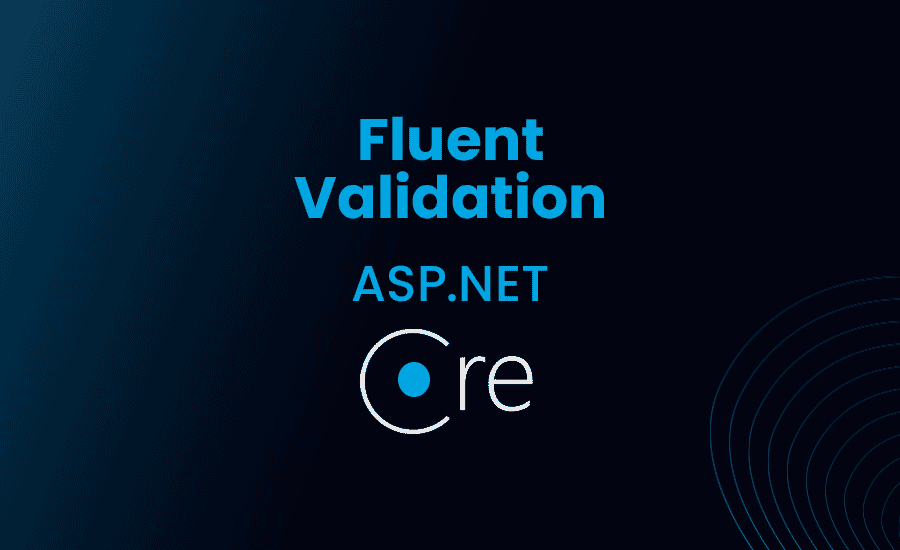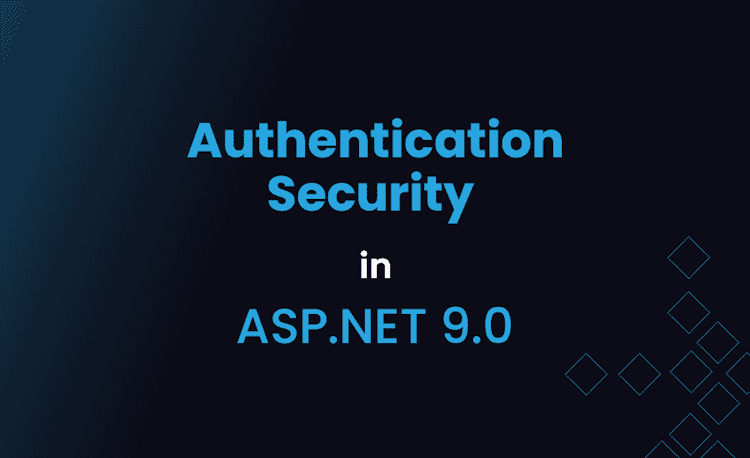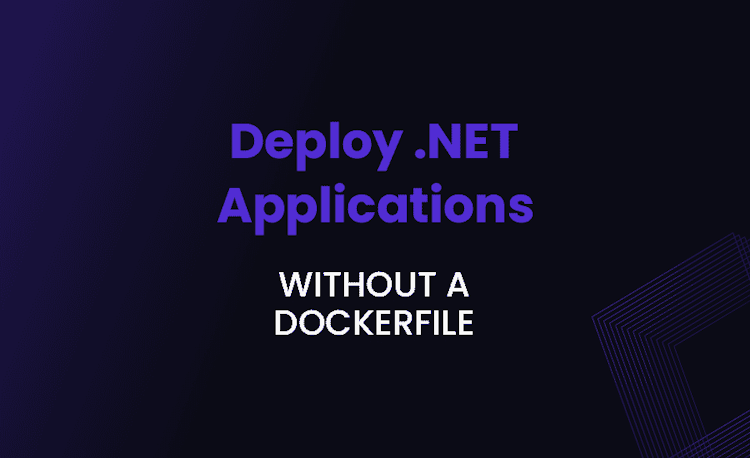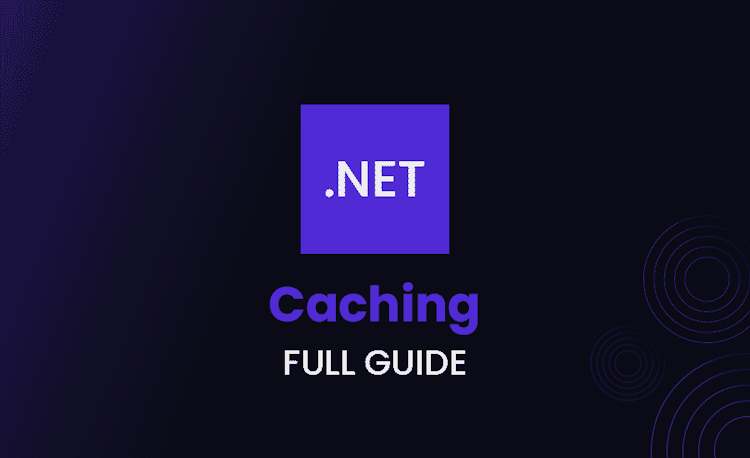Fluent Validation in ASP.NET Core – Complete Guide

Hey there coder! Have you wondered if there’s a smoother, more effective way to validate data in your .NET Core applications? That was a rhetorical question since you’re here; clearly, you have. So, let’s embark on this coding journey and discover how Fluent Validation can be a game-changer for your web application projects.
Understanding Fluent Validation in .NET Core
The well-laid foundation often builds the strongest structures. Let’s begin our journey by getting acquainted with Fluent Validation, its strengths, and what makes it a strong contender against traditional validation methods used in .NET Core.
What is Fluent Validation .NET Core?
Fluent Validation is a handy library for .NET that allows us to implement validation rules in a cleaner and more readable way. Imagine Microsoft’s legendary validation attributes and data annotation, then give it a caffeine boost. You get Fluent Validation!
With Fluent Validation, you can create complex validation rules using a process called “method chaining” or “fluent interface”. Sound exciting enough? Great! Now let’s get into the nitty-gritty.
The Core Concepts of Fluent Validation
Before we start writing some code, let’s understand some basics. Fluent Validation operates in a straightforward and robust manner. The primary classes you’d interact with while using Fluent Validation are:
- AbstractValidator: This is where your juicy validation rules will live. You will create a concrete validator class for each data model necessitating validation, and this class inherits from
AbstractValidator. - RuleFor: This is where the fun part begins.
RuleFormethods, chained with a selection of powerful rule declarations, give you a super flexible validation process.
Keen on implementing these concepts? Good! Just remember, patience is key. Proceeding without rushing ensures that you grasp everything in the best way.
Advantages of Fluent Validation C#
Thinking about adding Fluent Validation to your development toolkit? Here’s why that’s an awesome idea:
- High Level of Flexibility: Fluent Validation enables you to create any validation rule conceivable. It’s overflowing with power and flexibility.
- Testability: Fluent Validation ensures that your code remains test-friendly. No more wrestling unit tests!
- Cleaner Code: Say goodbye to cluttered data models. With Fluent Validation, your validation logic shifts to a separate class, hence clean code (and a happy developer!)
- Easy Maintenance: Fluent Validation’s pattern of separating validation rules from business objects makes maintenance a lot easier. If rules need to change, you know exactly where to look. Plus, it’s easier to reuse validation logic across projects.
- Better User Experience: Fluent Validation allows for easily customizable and detailed error messages that assist users in correcting their data. Helping users nail the scenario right off the bat rather than stumbling in the dark? Now that’s a win!
Comparing Fluent Validation to Traditional Validation Methods
You may ask, “Why not just stick to traditional validation?” Well, try to envision this scenario:
Dealing with complex validation scenarios using data annotation can be like trying to paint a masterpiece with a single flat brush. On the other hand, Fluent Validation is akin to having an entire artist’s easel, complete with brushes of all sizes and shapes.
With traditional validation, you can find yourself limited, writing custom validators or adding numerous annotations. Fluent Validation, with its broad array of rule options and methods, keeps your models cleaner and your sanity intact.
Setting Up Fluent Validation in .NET Core
Now that we are clear on what Fluent Validation brings to our code table, let’s roll up our sleeves and delve into the practical side of implementing it in our .NET Core projects.
Prerequisites for Fluent Validation ASP .NET Core
Before we embark on the Fluent Validation journey, there are a few essentials you need:
- You should have a basic understanding of C# and .NET Core.
- Set up a .NET Core project on your machine.
Got these checked off? Awesome, let’s proceed!
Installation and Configuration Guide
First, we need to add Fluent Validation to our project. Straightforward enough, right? Just open Package Manager Console and type Install-Package FluentValidation.AspNetCore.
Next, we need to update our Startup.cs file. Inside ConfigureServices method, add services.AddFluentValidation(). This tells .NET Core to use Fluent Validation instead of the default validation.
So far, so good? Awesome!
Setting up FluentValidation Middleware in your .NET Core Project
We can streamline Fluent Validation further by using Middleware. Middleware, in layman’s terms, can be called the strategic expressway of your ASP.NET requests, helping them achieve their desired destination smoothly and error-free.
Loading code snippet...
In the above snippet, we’re simply asking our .NET Core app to discover and register Fluent Validation from the same assembly as our Startup class. “Simple and sweet, just as we like it, right”?
Diving Deep into C# Fluent Validation
We’re ready now to dive deep and discover the power and flexibility of Fluent Validation. Let’s uplift our data integrity game!
Working with Fluent Validation Net
Setting up a validator in Fluent Validation is almost like writing a to-do list. Simple and straightforward, yet highly efficient.
First, we define a class that inherits from AbstractValidator and holds our validation rules. Say we’re working with a Customer data model. Let’s see how we can do this.
Loading code snippet...
Voila! We’ve specified two rules for the Name property of the Customer model – it should not be empty, and its length should be between 0 and 10 characters.
While coding, ask yourself this – “Is it clean, is it self-explanatory, is it fun?” If your answer is yes, you’re on the right track!
Understanding the Role of FluentValidation Database in Validation
Fluent Validation comes with an impressive arsenal of built-in validators. But what if you want to validate against dynamic properties, like ensuring a user doesn’t register with an already-existing email? That’s where FluentValidation Database shines!
Validation against database records is possible with Fluent Validation. Although, always remember that these should be thought of as business rules and not the basis for handling database integrity or security concerns.
Advanced Techniques in C# Fluent Validation
Aside from the basic validators, Fluent Validation provides a broad array of advanced options that allow creating context-dependent validation rules. Again, we could say that Fluent Validation is the Swiss army knife of .NET Core validation world.
For illustrating this point, let’s take an example of conditional validation.
Loading code snippet...
You can see that the Email property is required only if Member is true. If these advanced options don’t evoke a warm feeling in your coders’ heart, I honestly don’t know what will!
Fluent Validation in MVC: A Special Mention
If your application-type leans towards the MVC side, rejoice! Fluent Validation works perfectly with MVC applications too. Employing Fluent Validation in MVC projects paves the way for cleaner, more maintainable projects.
After setting up Fluent Validation in Startup, your MVC application will automatically enforce validation rules before performing an action. Simply decorate your action parameters with [Validate] attribute and you’re good to go!
But here’s the thing – wrapping your head around the MVC pattern while managing smooth data validation could be a significant task for a beginner. But trust me, it will all become second nature shortly!
Real-World Examples of Fluent Validation .NET Core
Let’s bring our learning into practice with some real-world examples. Here is where our guiding principles come to life, and we see our newfound knowledge bear fruit!
Basic Fluent Validation .NET Core Example: Form Input Validation
Imagine you want to validate data from a form, like user registration. The User model might have properties like Username, Email, Password. Let’s whip up some basic validation rules for this.
Loading code snippet...
Starting to see how smooth data validation with Fluent Validation is? The validator above is pretty self-explanatory.
Fluent Validation ASP NET Core Web API
Got a .NET Core API that needs some rock-solid validation rules? Fluent Validation has got you covered.
You setup and use Fluent Validation for a .NET Core API essentially in the same manner as any .NET Core web application. However, the WithMessage helper method is particularly beneficial here, as it sets the error message that your API would return on validation failures.
Here’s a brief example of how you can use Fluent Validation in your .NET Core Web APIs:
Loading code snippet...
In the example above, Fluent Validation checks if the Name property of the Customer model is not empty and if the Email property is in the correct format. The WithMessage method is used to customise the error message when the validation rules are not met.
Using Fluent Validation in Blazor Applications
Fluent Validation isn’t limited to MVC or API applications. If you’re a .NET Blazor enthusiast (and let’s admit it, who isn’t?), you can take all the Fluent Validation goodness to your Blazor applications as well.
A subtle yet vital detail is to call EditContext.Validate whenever you need to enforce validation. Call this just before your significant operations, and only proceed if EditContext.Validate returns true.
Here’s how to use Fluent Validation in your Blazor applications:
Loading code snippet...
In the Blazor application example above, the Fluent Validation library is used to validate user input on the client side. When the “Submit” button is clicked, the HandleValidSubmit method is called. This method creates a new validation context with the user’s input and validates it. If the model is valid, you can proceed with your significant operations. If it is invalid, you can handle the errors accordingly.
ASP .NET MVC Fluent Validation Example
Remember that Fluent Validation works seamlessly with MVC applications? Let’s have a quick example showcasing this.
Loading code snippet...
In the code above, upon calling the Register action, Fluent Validation will validate the model based on defined validation rules. If validation fails, ModelState.IsValid will become false, and you can return the validation errors. Beautiful, isn’t it?
Fluent Validation with Minimal API in .NET 6
Minimal APIs in .NET 6 is all the rage these days. They’re a concise, functional, and efficient approach to building HTTP APIs, and guess what? You can pull Fluent Validation in your Minimal APIs too!
What is FluentValidation Minimal API?
Think of it as seeing Fluent Validation enter a portal and coming out, ready to enhance and strengthen your Minimal APIs.
.NET 6 introduced the concept of Minimal API, a sleek way to set up APIs with minimal effort and maximum functionality. The good news is Fluent Validation fits perfectly well in this structure.
Implementing Fluent Validation in a Minimal API
Adding Fluent Validation to a Minimal API project is almost identical to the method we used for a full-fledged MVC API. The crucial part is to validate incoming models before processing them in your MapPost or MapGet handlers.
Loading code snippet...
You’ll notice in the code above that we’re passing FluentValidation.IValidator<User> as a parameter in our handler. This is due to the built-in dependency injection of .NET, and this becomes our path to accessing validation.
If the model is invalid, Results.ValidationProblem is used to send a standardized response.
Pros and Cons of Minimal API with Fluent Validation
Now, while marrying Fluent Validation with Minimal API can indeed simplify your work, it’s also vital to remember that Minimal API is, well, minimal. You might find handling complex situations slightly more challenging than your regular MVC API.
However, the ease of setting up and operating can outweigh this slight inconvenience, making the combination of Fluent Validation with Minimal API a popular choice for developers.
Fast recap:
Pros:
- Simplified Setup: Getting started with Fluent Validation in Minimal API is straightforward, reducing setup time.
- Increased Productivity: The simplicity of the Minimal API structure can enhance developer productivity.
- High Flexibility: Fluent Validation provides a high degree of flexibility for defining complex validation rules.
- Light Weight: Minimal API with Fluent Validation is light-weight, making it ideal for microservices.
- Improved Performance: Thanks to its simplicity and light-weight nature, Minimal APIs often perform better than traditional MVC APIs.
Cons:
- Handling Complexity: Dealing with complex situations or extensive validations could be a bit challenging.
- Limited Features: As the name suggests, Minimal API offers minimum features when compared to full-size APIs.
- Learning Curve: For developers new to Fluent Validation or Minimal API, there could be a learning curve.
- Dependency: There is a dependency on the Fluent Validation library.
- Maturity Level: Minimal API is relatively new in .NET, which could cause hesitations due to its maturity level.
Common Pitfalls and Best Practices in Fluent Validation
Before we wrap this up, let’s jump into some common mistakes to avoid and some best practices to follow while dealing with Fluent Validation.
Common Mistakes in Fluent Validation ASP .NET Core
Here are some common mistakes you might come across:
- Not handling validation results in calling code: This can lead you to proceed with an invalid model, which, in turn, might cause inconsistencies within your system.
Loading code snippet...
In the code above, validation results are not captured and used, making the validation process useless.
The correct way of handling validation results is shown below:
Loading code snippet...
The validation results are checked. If the model is valid, the method proceeds. If it’s not valid, a BadRequest response is returned with the validation errors.
- Registering validators in the wrong assembly: This can lead to validators not being discovered.
Always remember to register your validators in the right assembly. Below is an incorrect and correct way of setting up FluentValidation:
Loading code snippet...
- Over-validating: Over-validating means validating entities that don’t require validation, especially those handled by the system/database automatically. This might, on worse ends, strain your system including your time. It’s, therefore, crucial to consider carefully what needs validation.
Wrong example:
Loading code snippet...
In the example above, validating the ID could be unnecessary as it’s usually auto-generated by the database.
However, a well-considered validation example is:
Loading code snippet...
Here, only Name and Email, which are provided by users, are validated. Information like ID, creation date, or modified date, etc., which are usually automatically handled by the system, aren’t validated unnecessarily.
These common mistakes stress the importance of understanding and implementing Fluent Validation correctly to ensure consistent and error-free validation in .NET Core applications. Remember to capture the validation results and handle them accordingly, register validators correctly and purposefully choose your validation targets.
Best Practices in Fluent Validation for Maintaining Clean Validation Logic
Successful application of Fluent Validation requires some best practices:
Keep your validation logic segregated from your main business logic.
Keeping your validation logic separate not only makes your code cleaner but also easier to maintain and test. Consider creating a specific validation class using Fluent Validation.
Loading code snippet...
In this example, we’ve created a separate OrderValidator class for validation logic using Fluent Validation, segregating it from the main business logic.
Use selector methods like
These methods make your validation rules more intuitive and manageable. They follow a fluent interface design pattern making your rules easier to read and modify.
Loading code snippet...
In this snippet, the When method is used to apply the price rule only if the item is available. This makes the validation more precise and potent.
Utilize the
Providing custom error messages makes it easier for users (and developers) to understand what went wrong. It’s a user-friendly approach.
Loading code snippet...
The WithMessage function is used here to set a custom error message when the email field is left empty.
Prefer validating in your Fluent Validation middleware rather than in each controller action manually.
This simplifies and standardizes where and how validation is applied, reducing the chances for errors and omissions.
Loading code snippet...
In this example, the FluentValidation framework is added to the middleware during the service configuration, ensuring that validators like OrderValidator will automatically be applied where needed.
Following these practices can ensure you get the best out of Fluent Validation. It will also ensure you create maintainable, clean, and scalable code.
Conclusion: The Power of Fluent Validation in .NET Core
It seems like you’ve made it to the end with me! Isn’t it wonderful we made it together? Going all the way from understanding what Fluent Validation is, up to digging deep into real-world example apps, Fluent Validation feels less daunting now, doesn’t it? It’s a new tool for your developer chest.
With Fluent Validation under your belt, you can efficiently guarantee data integrity in your .NET Core applications and APIs, while keeping your code tidy and maintainable. To be honest, it hardly gets better than this.
By this point, you might be close to becoming a Fluent Validation evangelist and spreading the streamlined validation magic to your fellow coders, because why not share the good things, right?
So, wear your Fluent Validation badge with pride, and get ready to show your fellow developers how simple yet potent data validation can be. After all, isn’t coding all about problem-solving and continuously learning?
Happy coding, my friend!





